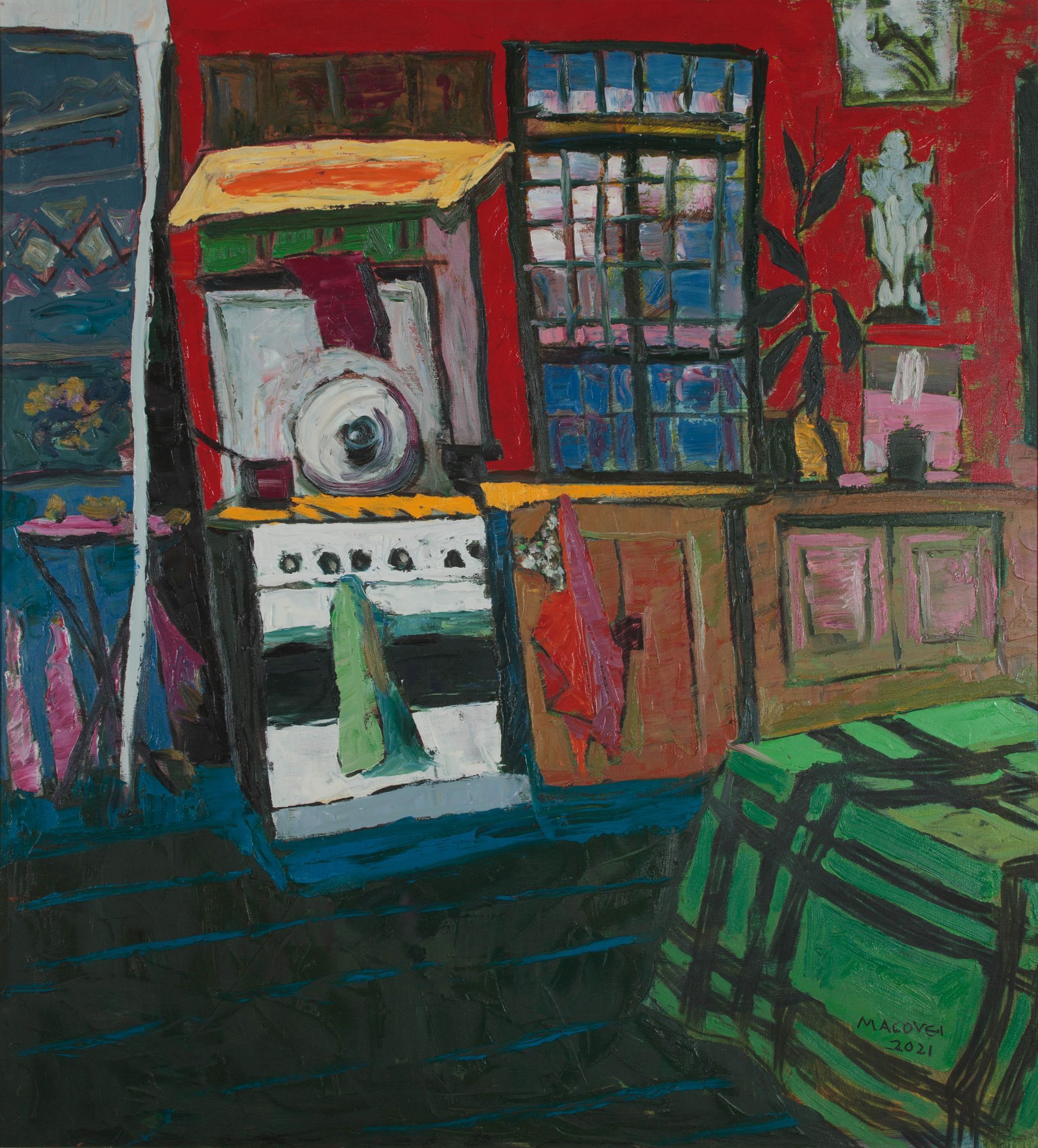Dumitru Macovei
The Paradoxes of Dumitru Macovei

"Any discussion about Dumitru Macovei's painting, in a possible attempt at a critical and historical analysis of his creation, will inevitably prove to be a wrong choice because it would start from a restrictive premise. The case of Dumitru Macovei is the one that offers all the possible perspectives for reading and analysis, because it goes far beyond the strict vocation and actual practice of the painter. And this case is one, if not singular, in any case quite rare, and all the more spectacular, in the entire course of Romanian art.
If the possible researcher were interested in the creation of the artist from his youth, he would find him mainly on the scaffolding of the muralist and in various attempts to express himself in front of the easel, but without concluding, or at least indicating with some certainty, an expressive approach and a specific stylistic profile. This artistic youth, discreet and somewhat indecisive, rather marked by shyness and caution, did not explicitly announce almost anything of the true insurgency that Dumitru Macovei unleashes, in the moments of full maturity, i.e. around the age of fifty. Now, at this stage of life, when in countless cases the blasé and comfort of one's own manner is established, when the workshop recipes and language stereotypes are consolidated, Macovei explodes, really, and instantly subjugates any viewer, be he innocent or one with consolidated experiences in the field.
Along with this disinhibition, the equivalent of a true artistic renaissance, the painter launches, in addition to the direct optical challenges, and a number of implicit questions, those that refer to the unseen part of his painting, that is, to upstream attitudes, to seduction strategies, to the tactics of conquest and, above all, to the type of artistic thinking able to coagulate them all in a unique and definitive synthesis. At first glance, Dumitru Macovei seems to impose himself through the color, energy and purity of the tones, often virgin, as they come out of the tube, but this, on an analysis that manages to evade the first impression, is neither far enough, because there are so many color handlers who devastate the factories and put the production of pigments in crisis for nothing. Here it is not about the color as such, about the pregnancy and about its intrinsic power, but about the order and about the meaning of the color, and on this ground Macovei meets two Romanian painters whose genes are archaeologically contaminated with the Apollinian-Saturnian bipolarity of Van Gogh, namely with Ion Tuculescu and Constantin Cerăceanu. The energy and chromatic sensibility are obviously from this vein, but the inner state and mental order, of a paradisiacal spin this time, are those in which the memory of Eden, of the Garden of the East, not only has not faded, but, on the contrary, it sharpened drastically. And this order, in indirect and extremely subtly catalyzed ways, comes precisely from his experience as a muralist, as a monumental painter who understood, in a deep and refined way, the hieratic scheme, the graphism and the enormous compositional brevity of Eastern ecclesiastical painting, in the case of those of Byzantine and post-Byzantine origin.
The inner order, the graphic lucidity, the severe scaffolding of the compositions, this is exactly where they come from, they are processed rationally and artistically processed in an exemplary way, and this time Dumitru Macovei meets, however surprisingly, Theodor Pallady. And just as in Pallady's case, he places himself at an equal distance from motif painting, perfectly recognizable, mostly overwhelming - landscapes, interior scenes and still lifes - and experiments with language, reduction to codes and conventions, two-dimensionality and geometry, undecided between the sacred austerity of the icon and the inner freedom of the avant-garde gesture. But if the relationship with the classical easel painting is extremely relaxed and relative, formal experimentation and the escape from conventions are also tempered, which tacitly affirms that true liberation never means dissolution.
If we were to summarize the case of Dumitru Macova in a few words, they would refer to the fact that he manages to reconcile the internal combustion and effervescence, i.e. the voluptuous and sensual perception of the world, with mental order and the austerity of thinking, in other words he succeeds to reconcile Ion Ţucuescu with Theodor Pallady, that is, to reconcile, in a single statement, two apparently irreconcilable attitudes."
Pavel Susara
MoBU
LEGAL
PRESS
Copyright© 2024 Kulterra, All Rights Reserved


